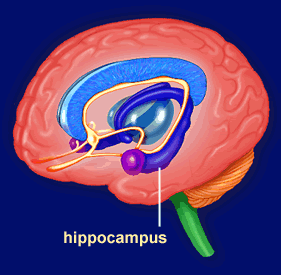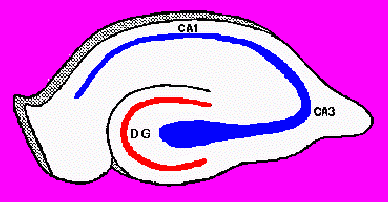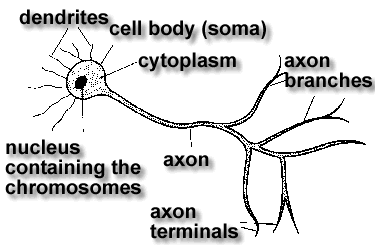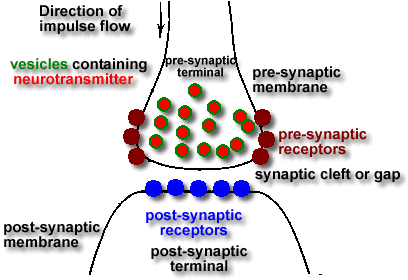

This
web page was produced as an assignment for an undergraduate course at
Davidson College.
THE
HYPE:
You’ve always heard it. When
you get older, you’ll lose your memory.
Some people lose more of their memory (persons suffering
from Alzheimer’s or Huntington’s Disease) than the average elderly
person; others seem to retain it until their dying day. Why do some people have better, longer lasting memories than
other people? Can we
genetically select our children to have a good memory?
Or better yet, can everyone obtain a great memory by “popping a
pill” or by a simple injection?
The
supporters:
Well, perhaps you read about it in the September 13, 1999 issue of TIME,
or maybe from the BBC’s
website, but the gene for memory has been found! The BBC boasts that such a
find could lead to a “treatment which keep the minds of the elderly as sharp as those in younger
people.”
In addition, the BBC attests that these findings may lead to a cure for
Alzheimer’s’ Disease.
The June 15, 1998 issue of Newsweek discusses the
American desire to stay young, specifically never to loose the ability
to remember. It discusses
how people would do almost anything to keep their memories “alive.” It included examples of people buying upwards of $100 worth
of videos and books that teach people how to maintain their memory.
Thus, the public must be rejoiced at the thought of a simple drug
to cure memory loss!
The products:
Intelectol®, from Covex, is advertised as “the memory pill.” Through the website, you can order free samples of this medication. They advertise that there are no side effects and that the active ingredient in the medication is Vinpocentine. Intelectol states that Vinpocentine “facilitates cerebral metabolism by improving blood flow to the brain, boosting brain cell ATP production, and increasing utilization of glucose and oxygen by neurons.” This company was giving away free samples of their pill, though they are all out of stock at the present time (9/17/02).
Similarly, OnlyNatural.com sells the "Memory Booster Pill." This pill, like the memory tablets sold by Vitamasters, contains Ginko and other "enhancing nutrients." This company does not give any information regarding the other ingredients used, and it is a little more expensive, selling at $15.99/30 tablets.
The
skeptics:
The September 13, 1999 issue of TIME reviews the new
findings, though instead of being
extremely excited for a cure for memory, instead they are skeptical that
a cure has been found, and if it should be used.
Before discussing the ethical implications of treating memory problems, the TIME article gives much background information regarding the studies that have been completed. This background information, though not complete, does give the reader enough substance to understand the basic biology behind the research. After discussing the biology of memory, Lemonick, the author of the article, discusses the ethical implications of treating memory. His main area of focus involved typically healthy persons taking the memory drug to enhance his/her performance. By doing so, then are scientists creating smarter babies/persons? If so, does this border on genetic engineering, and is that safe to "play" with? Will it create a intelligence barrier between the rich and the poor (b/c only the rich will be able to afford such treatments)? The article leaves many of these questions unanswered, though leaves the reader wondering if creation of a "memory pill" is a worthwhile venture.
Fortune agrees
with TIME in that the finding of the "memory gene" does not
necessarily imply a cure is on the way. In fact, Fortune states, "It
probably won't ever be possible to develop a do-all memory pill."
Also like the TIME article, Fortune explores whether medications should be
created for this purpose. Fortune doesn't site as many ethical problems,
but examines many medical concerns. For example, since so little is known
about the brain, it may be risky to take drugs that alter aspects of the
brain. These drugs may also alter a part of the brain that controls
addictions or other diseases. At this point in time, scientists do not understand the
medical implications of drugs that affect proteins in the brain.
Who's right? The supporters? The skeptics? Do those memory enhancing pills really perform as advertised? Only science can tell us the answers...
THE
SCIENCE:
Where
does memory occur?
Memory
occurs in the hippocampus in the forebrain.
Specifically, CA1 region is associated with retention and the CA3 region
is associated with retrieval (Our
Time, 2002) of memories. Memory
is thought to be directly related to plasticity and strength of the synapses
between neurons in the brain. Long-term
memory is created through changes in the strengths of these synapses.


Fig. 1.
This figure shows
Fig.
2. This figure shows the different
the location of the hippocampus
regions
in the hippocampus.
in the brain. (seeking permission from Brad Wyble)
Permission from Journey into the Brain and Morphonix
http://www.morphonix.com/software/education/science/brain/game/specimens/hippocampus.html
http://www.wjh.harvard.edu/~wyble/hippo.html
How
does memory work, and what proteins are associated with it?
Though the exact mechanisms
of memory are not known, scientists have a good idea of how the process
works. Essentially, the
presynaptic neuron communicates a signal to the postsynaptic neuron (see
Figures 3 & 4).
This, in turn changes the polarization of the membrane
(depolarizes the membrane).
At
the far, dendrite end of the neuron, there is the NMDA (N-methyl-D-aspartate).
The presence of this protein is thought to directly correlate
with memory. If the
membrane is depolarized at the same time glutamate (a neurotransmitter)
binds to NMDA, NMDA becomes active.
This causes the synapse to strengthen, thus causing the formation
of a memory.
Although
scientists still are not sure of how animals store thoughts, they
believe that this is the most accurate account.


Figure 3. This is a diagram of a neuron. Figure 4. This diagram shows the synaptic cleft, looking
(seeking permission from University of Plymouth) specifically at the pre and post synaptic receptors and terminals.
http://salmon.psy.plym.ac.uk/year1/neurotr.htm (seeking permission from University of Plymouth)
http://salmon.psy.plym.ac.uk/year1/neurotr.htm
How come memory differs from person to person, and how come it gets worse as people age?
The NMDA protein is composed
slightly different for each person.
There are two main components to NMDA, NR1 and NR2.
NR1 controls channel function, whereas NR2 controls channel
gating and magnesium dependency (Tang, et al, 1999).
Each person has exactly one NR1 unit, though each person has a variable
amounts, and types, of NR2 units. There
are four different types of NR2: NR2A, NR2B, NR2C, and NR2D.
Each type has a slightly different function.
Though there are four types of NR2, only two of these types are
found in the hippocampus (where memory takes place).
These types are NR2A and NR2B.
NR2B
shows a longer duration of memory than NR2A (Bliss, 1999).
In addition, NR2B is present in greater quantities in young
people than in older persons. Thus,
NR2B is sometimes referred to as juvenile.
People
who have a greater number of NR2B proteins have a greater capacity for memory.
As a person ages, the amount of NR2B decreases.
In addition, the number of NMDA receptors also decreases in the
aging brain. Scientists are
unsure of why this decrease occurs, but do know that it is linked to memory
loss.
NMDA is located at 8q24.3 in the human genome (OMIM_NMDA).
NR2B is located at 12p12 in the human genome (OMIM_NR2B).
So
if we know where and why the problem occurs, can we fix it?
Many companies boast that they have found the "cure" for memory loss, though no such cure exists. People believe that since memory has been linked to the decrease of a specific protein, replacement of that protein may constitute "the cure." Though this seems relatively simple, inserting this protein into the proper place in the brain is much more difficult than first appears. How will scientists be sure that the protein goes to the correct spot? How will they be sure that the protein is expressed, and not digested by the cells? How can scientists be sure that no other processes will be affected by the insertion of this protein? Are we sure that there are no other causes of memory loss? Because these questions remain unanswered, the "memory pill" has yet to be created.
Tang, et. al. (1999) experimentally inserted NR2B rich NMDA receptors in the hippocampus of mice. The transgenic mice had approximately two times the amount of NR2B expression compared to the wild-type mice. The transgenic mice (termed Doogie) showed normal growth, weight, and mating patterns, though they maintained their juvenile (NR2B) state much longer than the wild-type mice. When examined with a number of intelligence measures, it was found that the transgenic mice performed better than the wild-type mice. The NR2B rich mice remembered things longer and learned skills slightly faster. Thus the mice with NR2B rich NMDA receptors appeared to have a better memory than the wild type mice. This study indicates that by inserting NR2B genes into the hippocampus, the capacity for memory increases. Though this finding has only been shown to work in mice, Tang et. at. is hopeful that this technique can be expanded for application to humans.
You
can read a review of this study here.
So
if this surgery works in mice, can it work in humans?
No one can be sure. Before any experimental surgery is performed, more research must be performed to understand the long term effects, and any other side effects that may occur. Though as Tang, et al states, “our results suggest that genetic enhancement of mental and cognitive attributes such as intelligence and memory in mammals is possible” (Tang et al, 1999)…perhaps in the future?
CONCLUSIONS:
Though some companies feel as though they have found a cure to memory loss (herbal supplements), scientists are not convinced. Scientists believe that memory loss is associated with the NMDA receptors, specifically the NR2B portion of these receptors. Though "cures" have been found in mice, these results have not been replicated in humans, and are still in the initial stages of testing. Thus, it does not appear as though a cure for a bad memory is in the near future.
References:
BBC.
2000. Memory Pill for the elderly. http://news.bbc.co.uk/1/hi/health/708273.stm
accessed 9/7/02.
Bliss.
1999. Young
receptors make smart mice. Nature.
Vol 401. Pg 25-26.
Intelectol. The Memory Pill. The Memory Web. http://www.the-memory-pill.com/free.htm accessed 9/7/02
Cell and Molecular Biological Studies of Memory Storage. http://www.hhmi.org/research/investigators/kandel.html accessed 9/7/02.
Stipp, D., 2001. A Pill to Help you Remember. Fortune. http://www.fortune.com/indexw.jhtml?channel=artcol.jhtml&doc_id=204815&page=2&_DARGS=%2Fartcol.jhtml.4_A&_DAV=artcol.jhtml accessed 9/16/02.
Wasowicz, L. 2002. Memory gene won’t let you forget. Our Time. http://www.xpresssites.com/lee/lacrosse/xpspecialsections/ourtime/story_267038.asp accessed 9/6/02.
Megan's Behavioral Genetics Home Page
Return To Biology Course Materials
Davidson College Biology Department